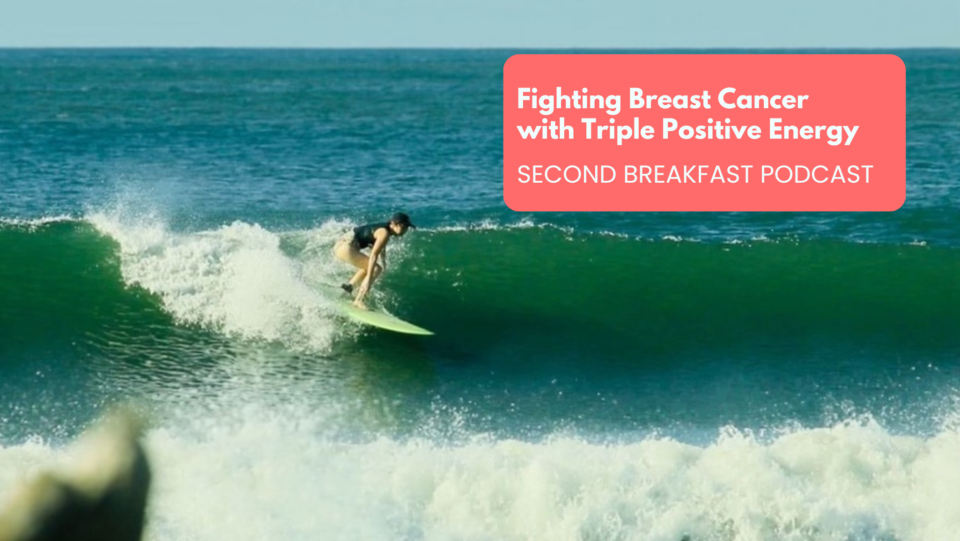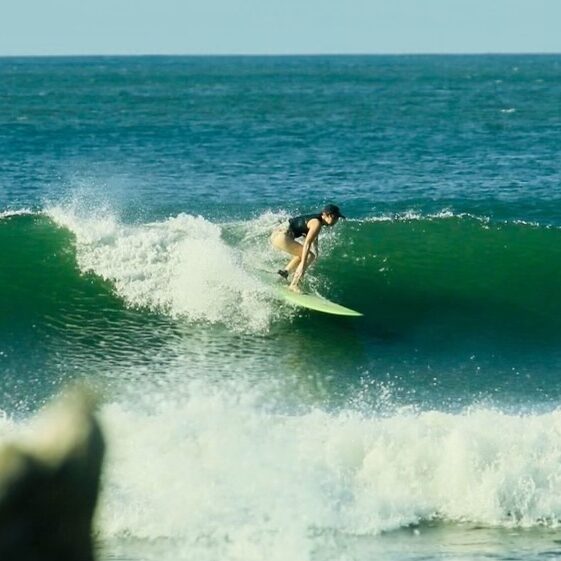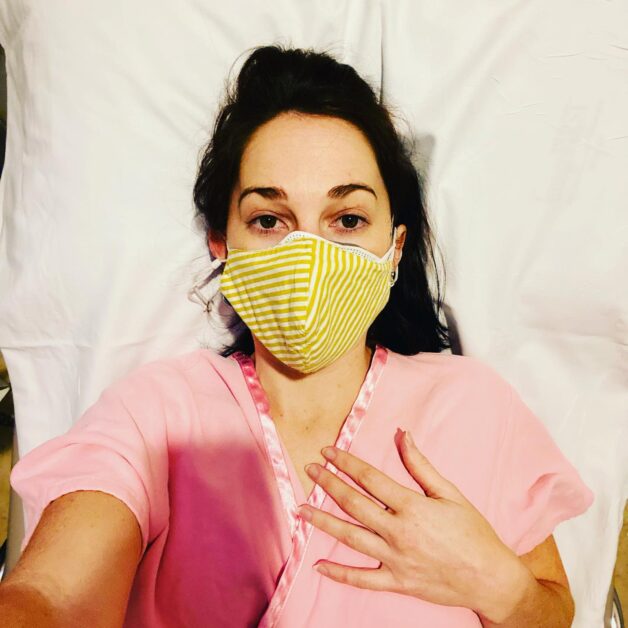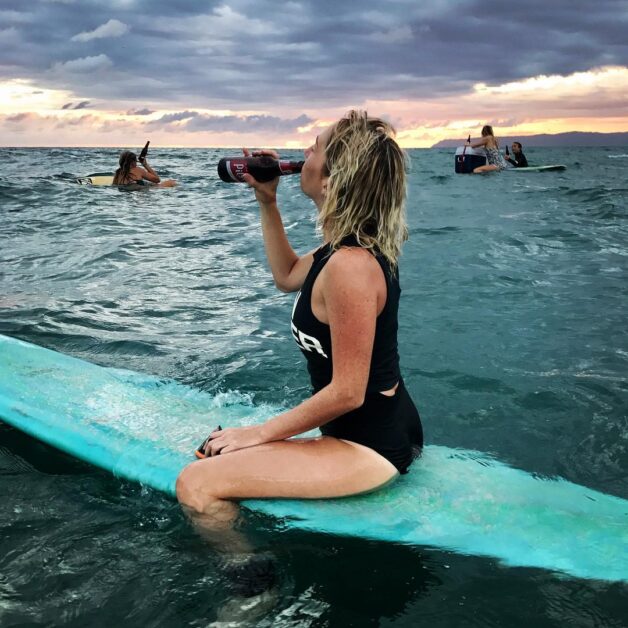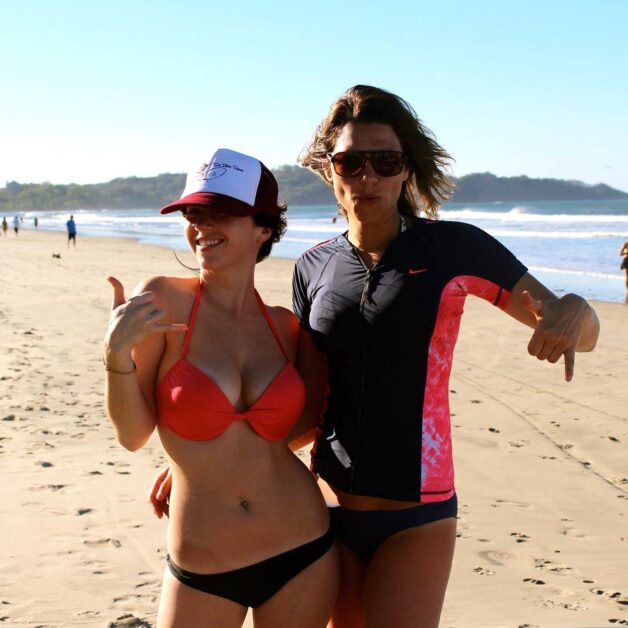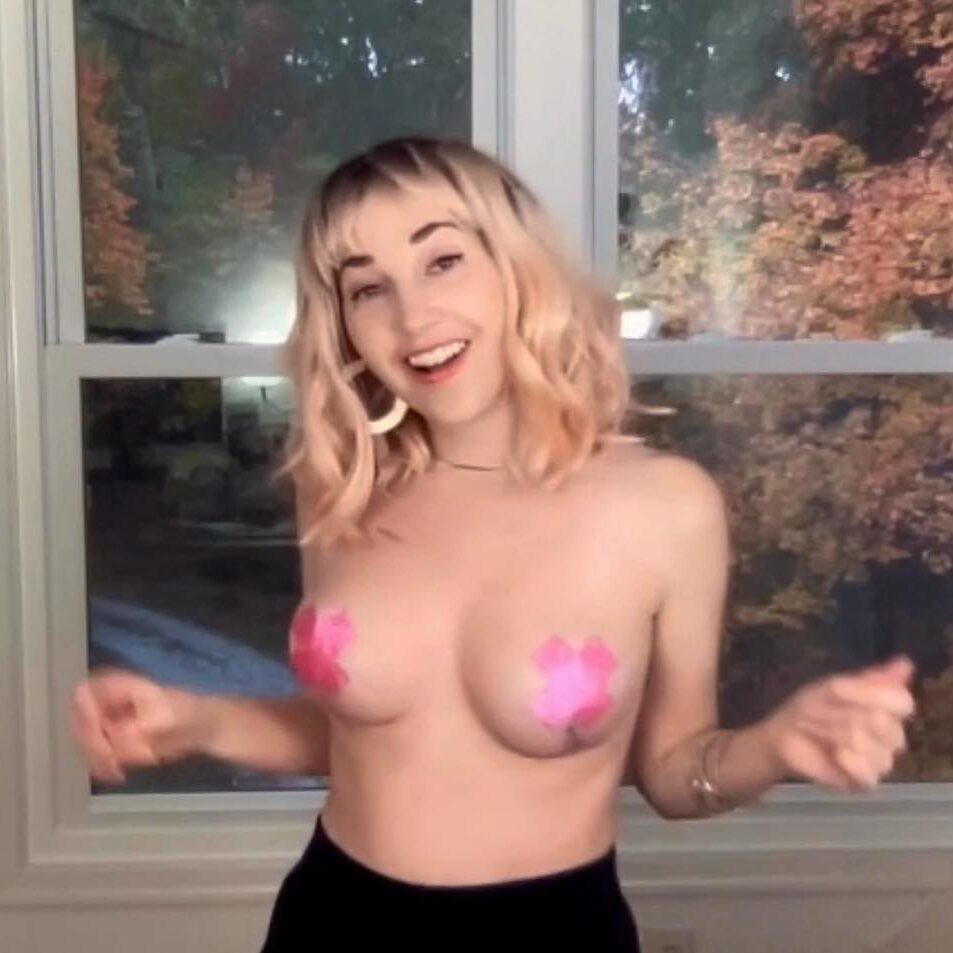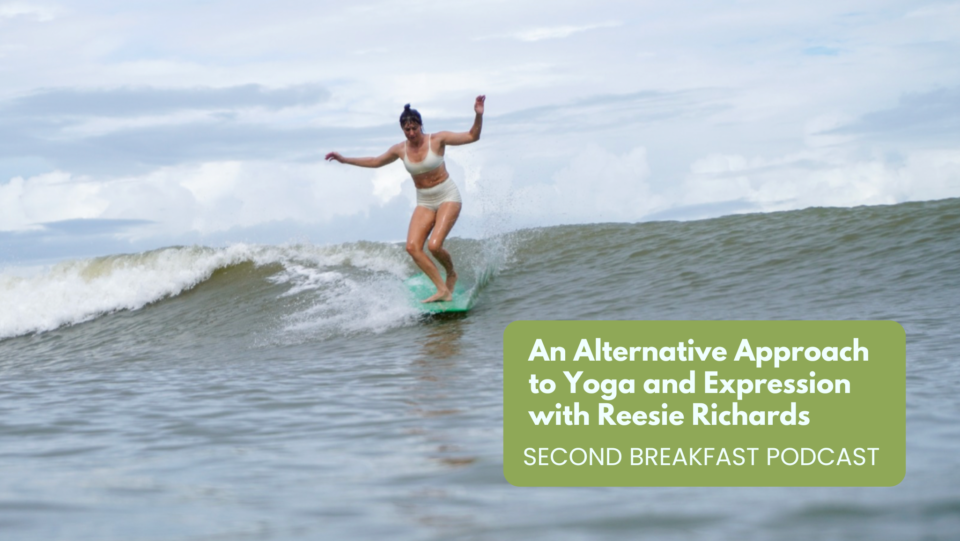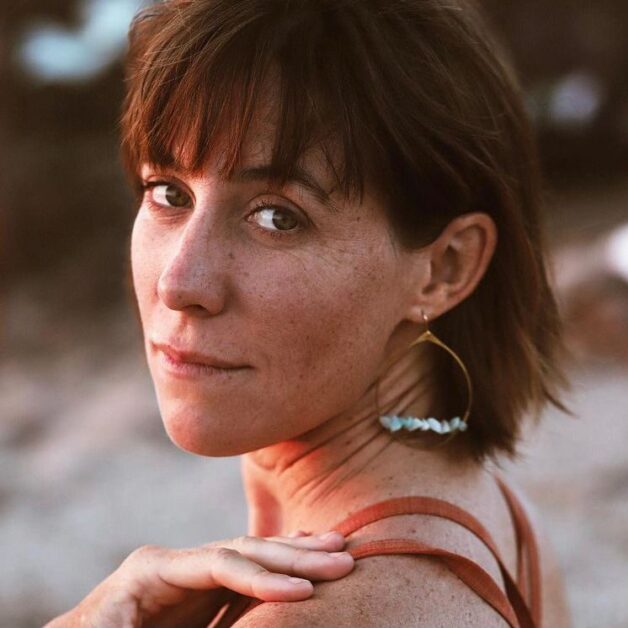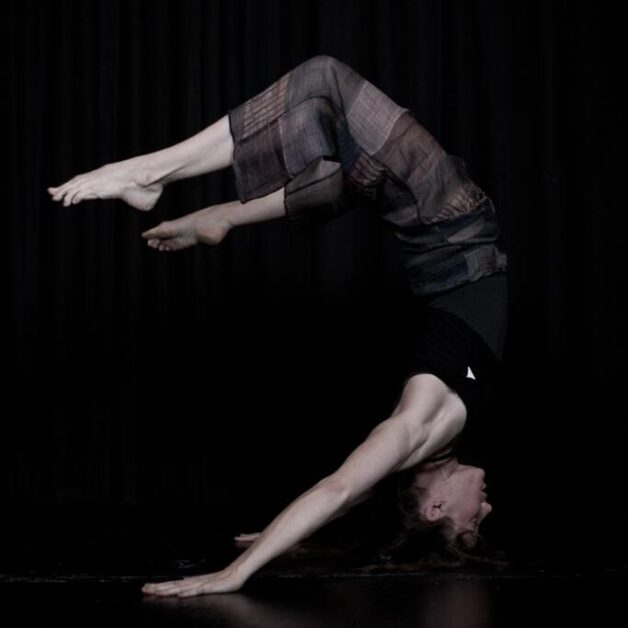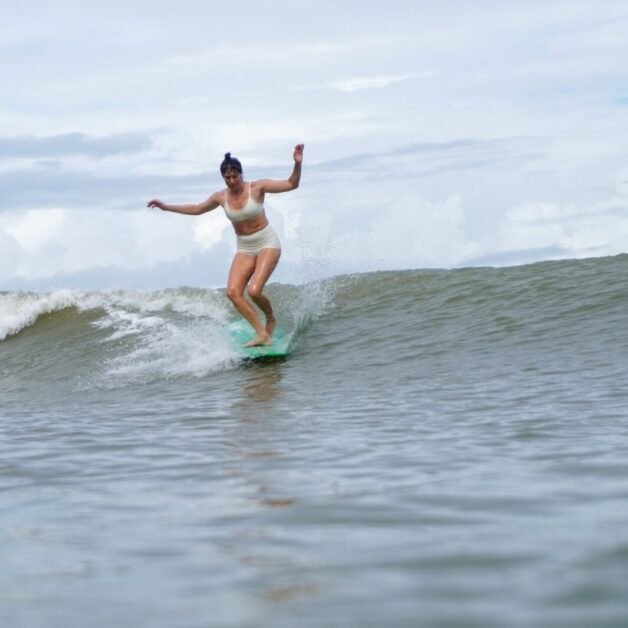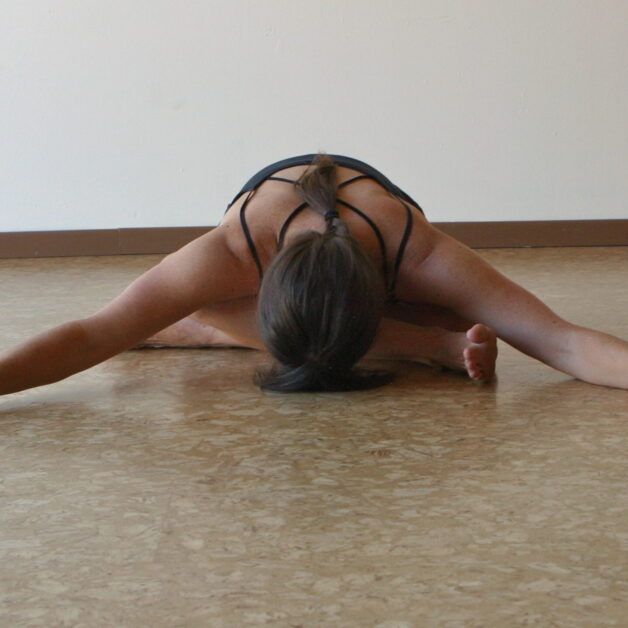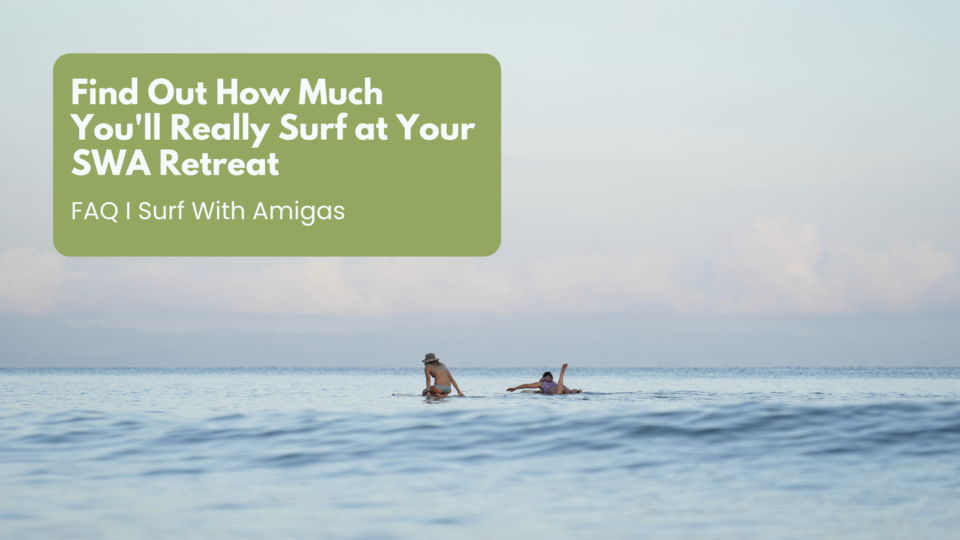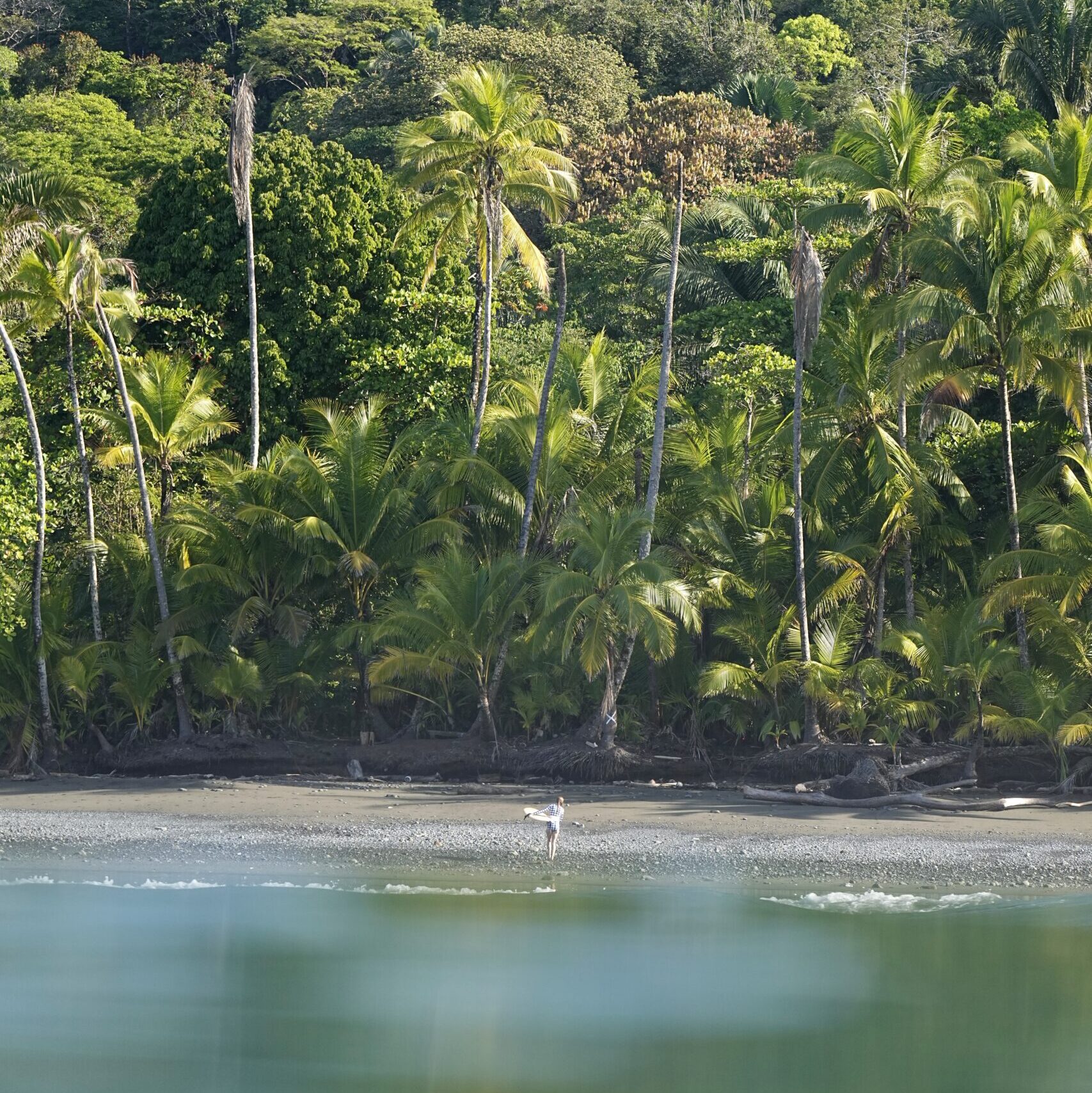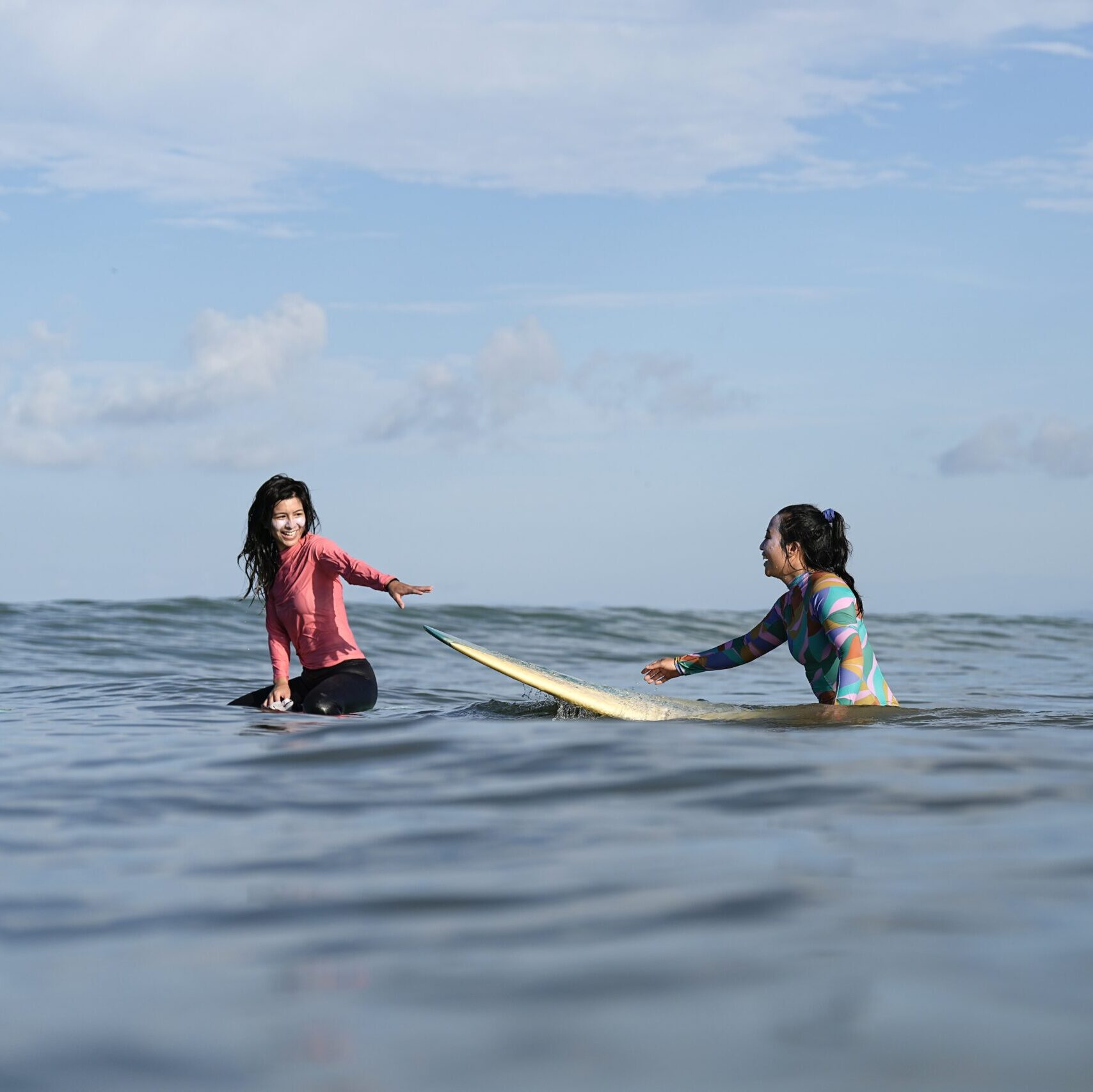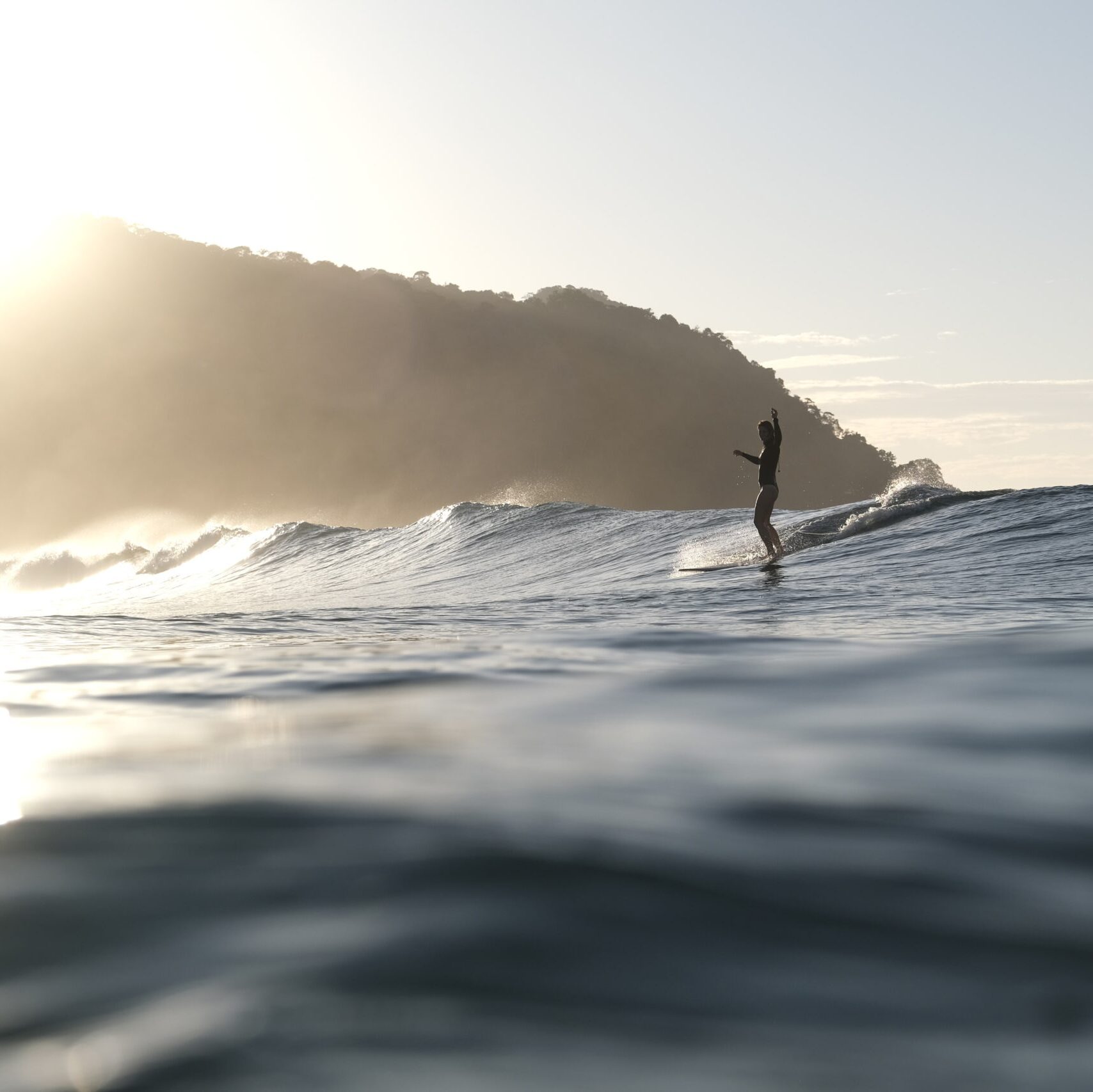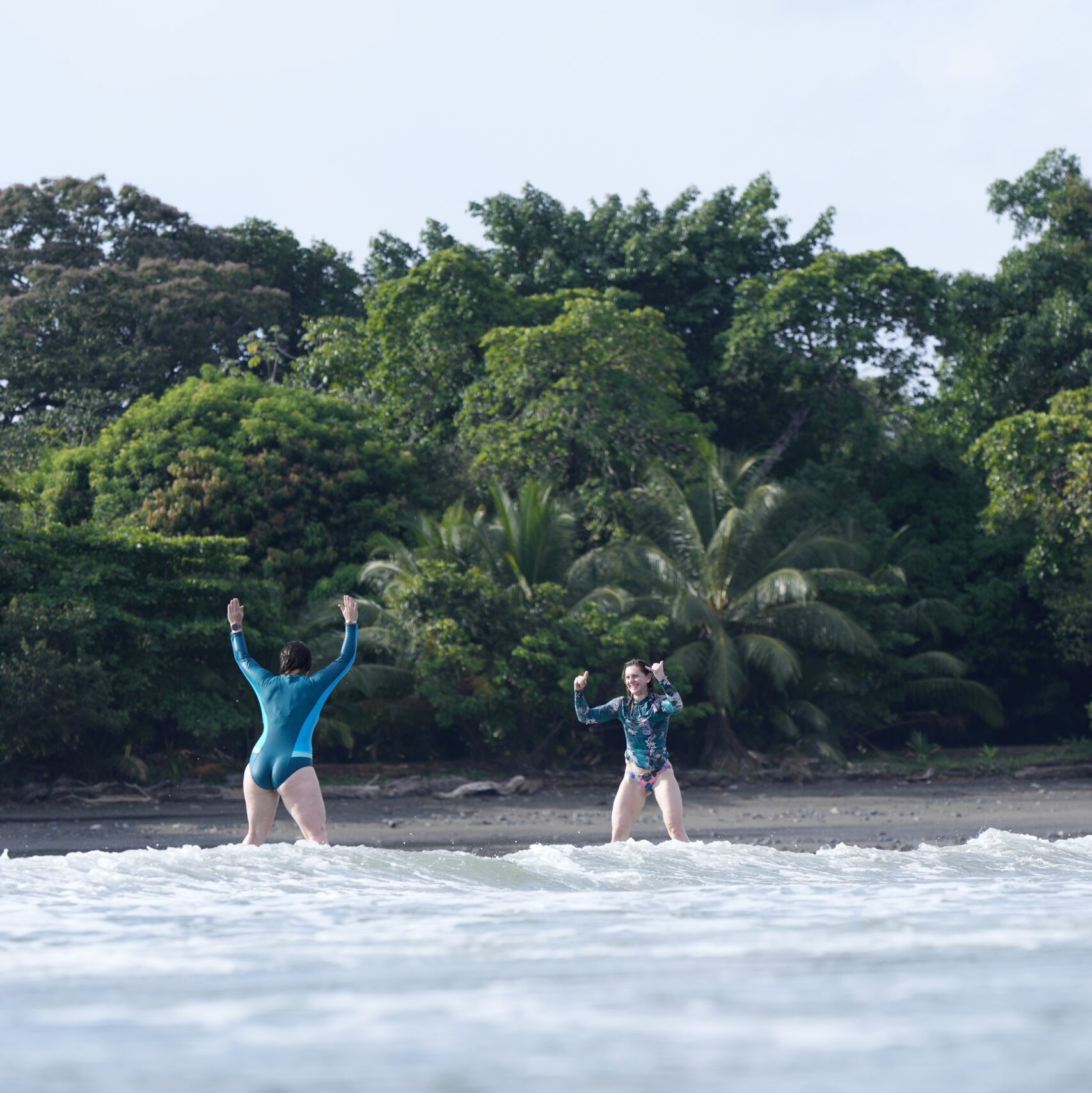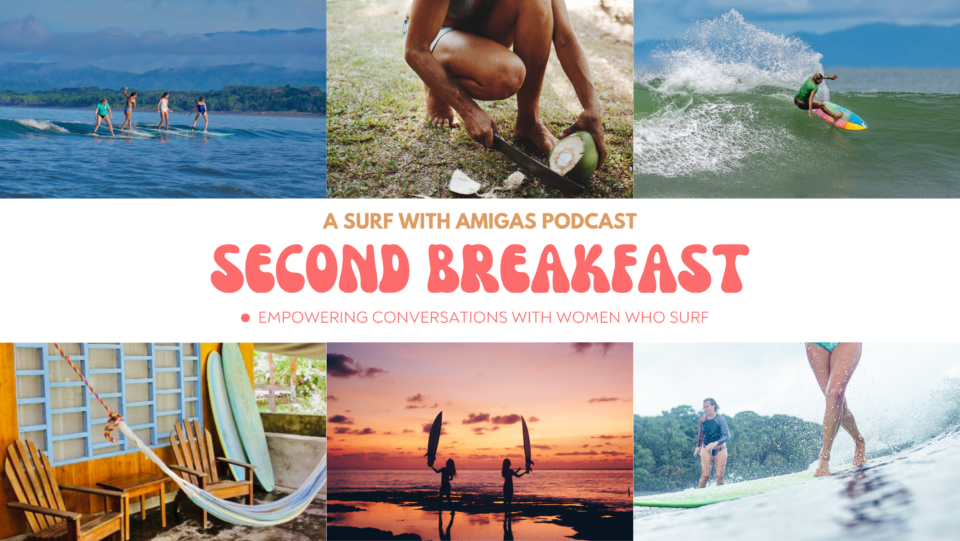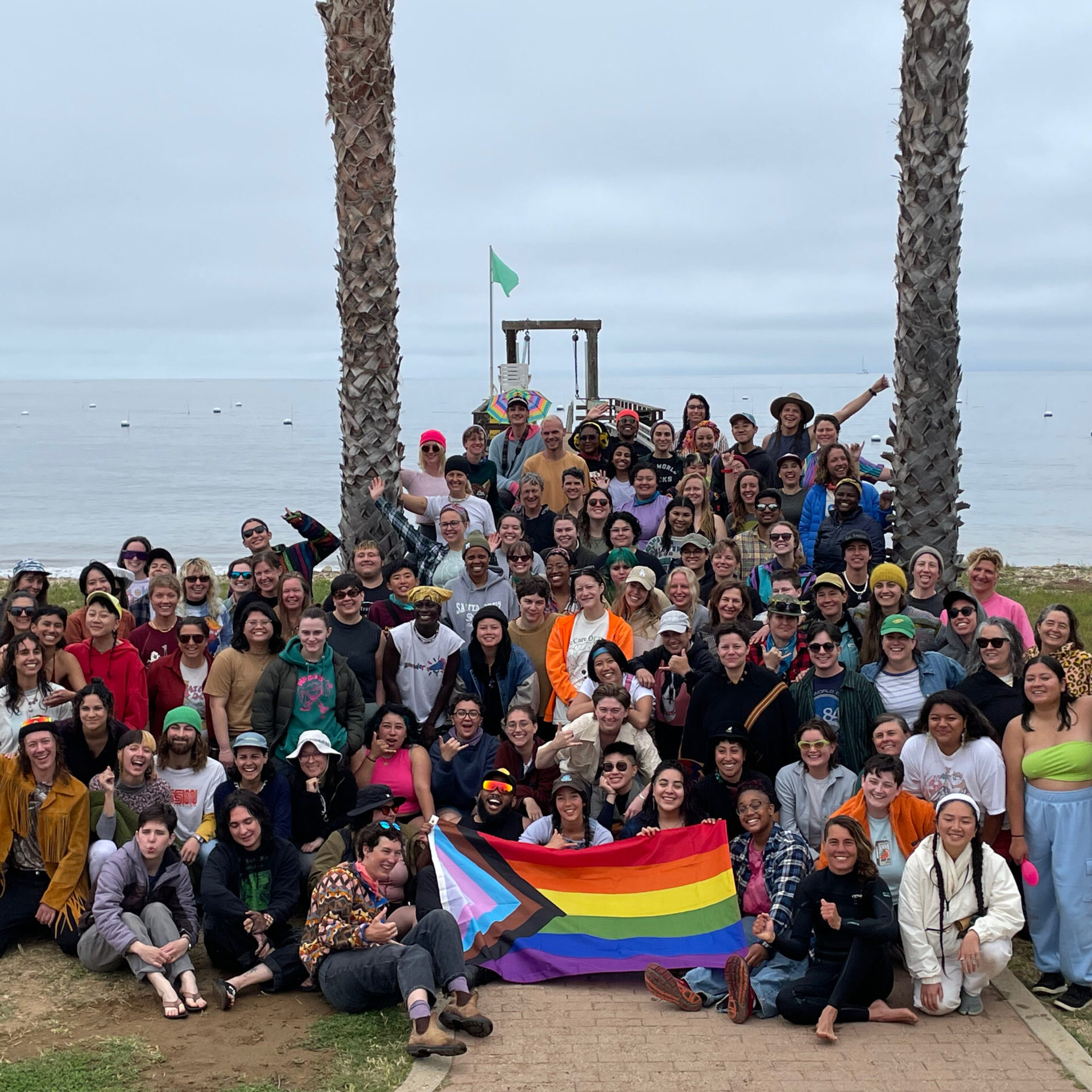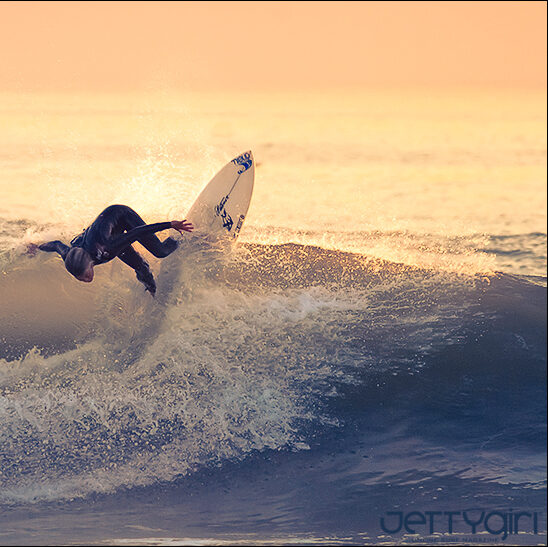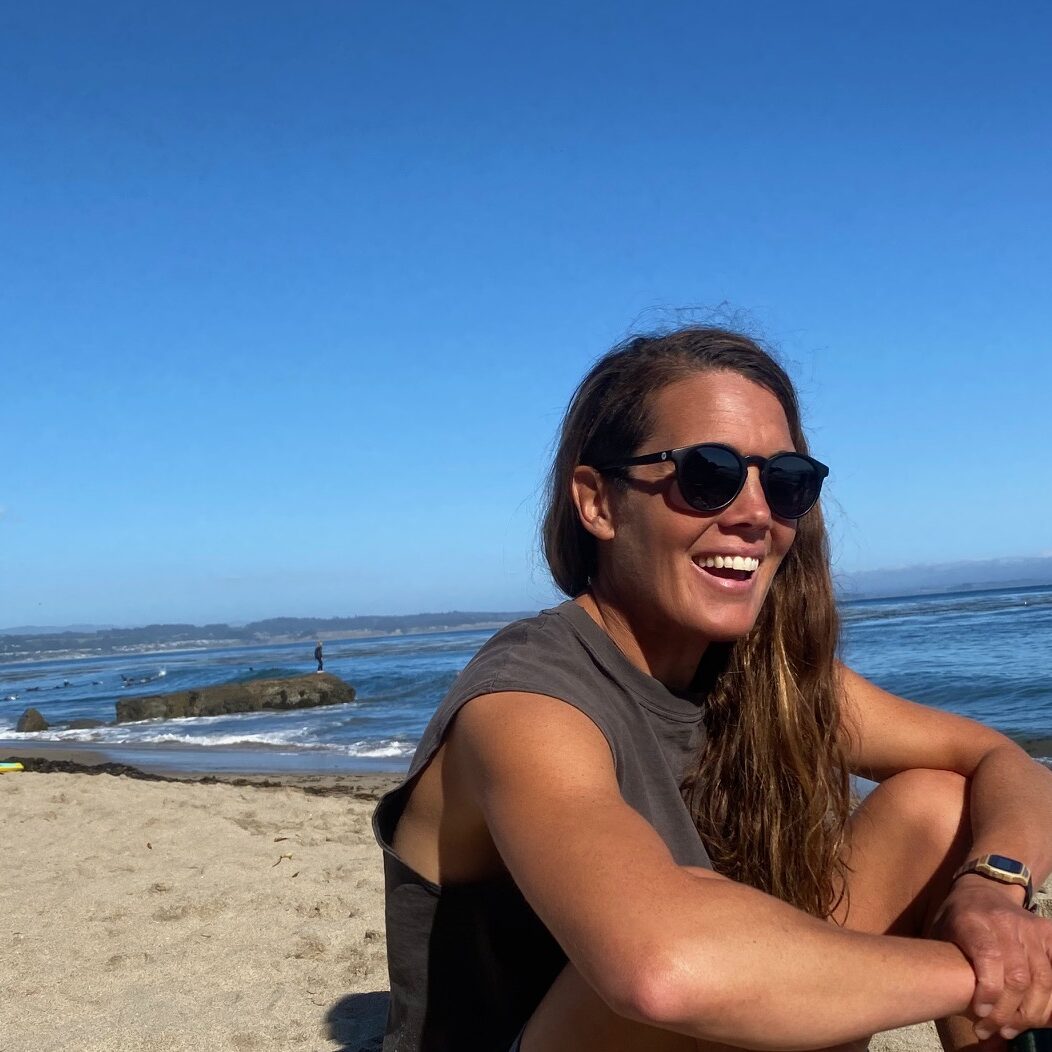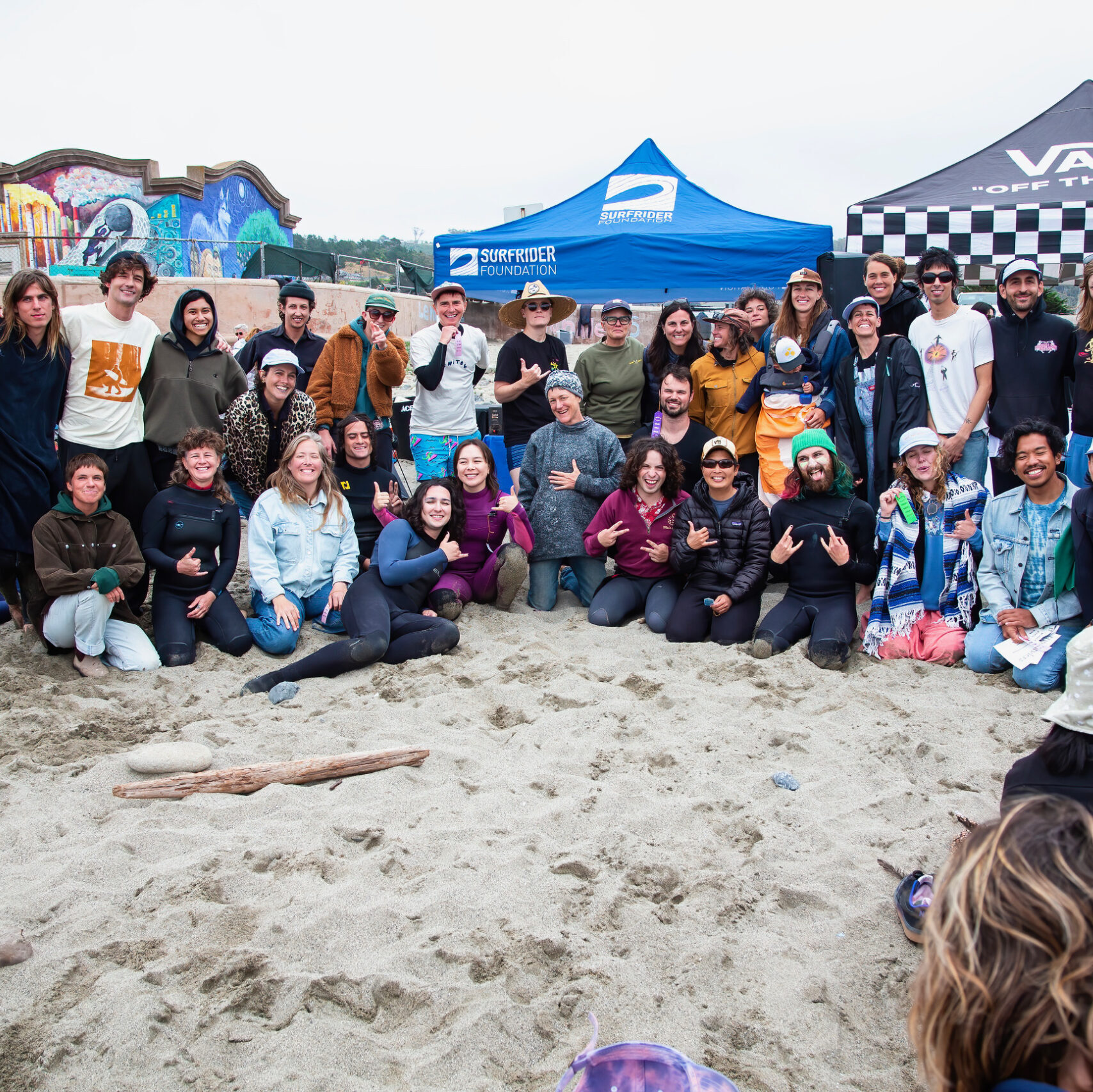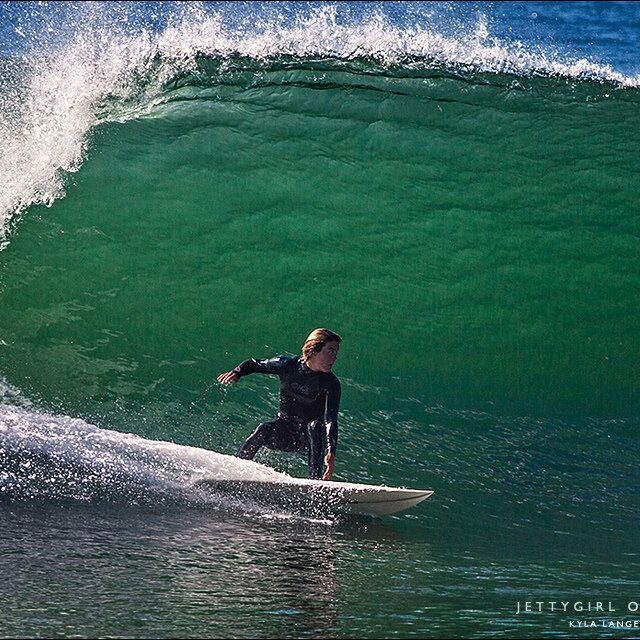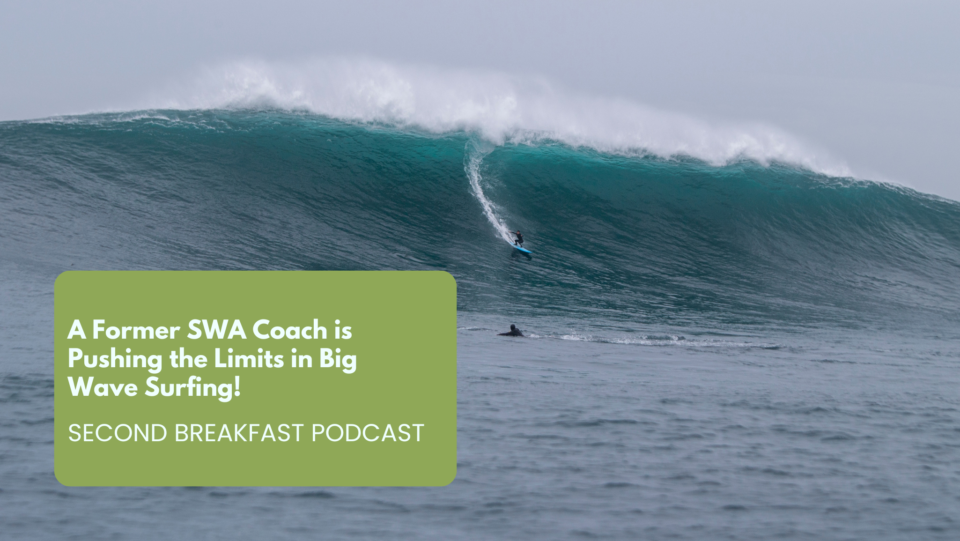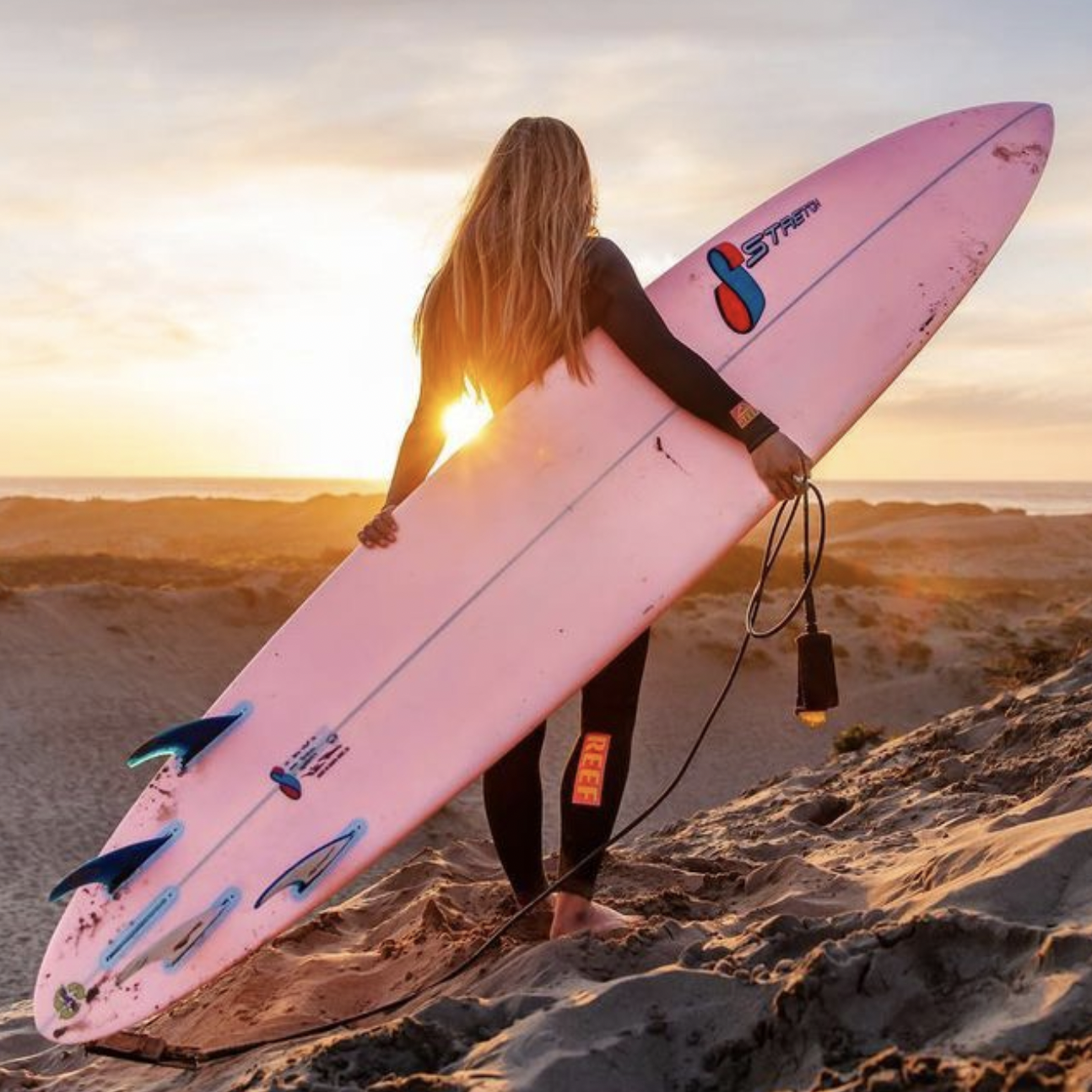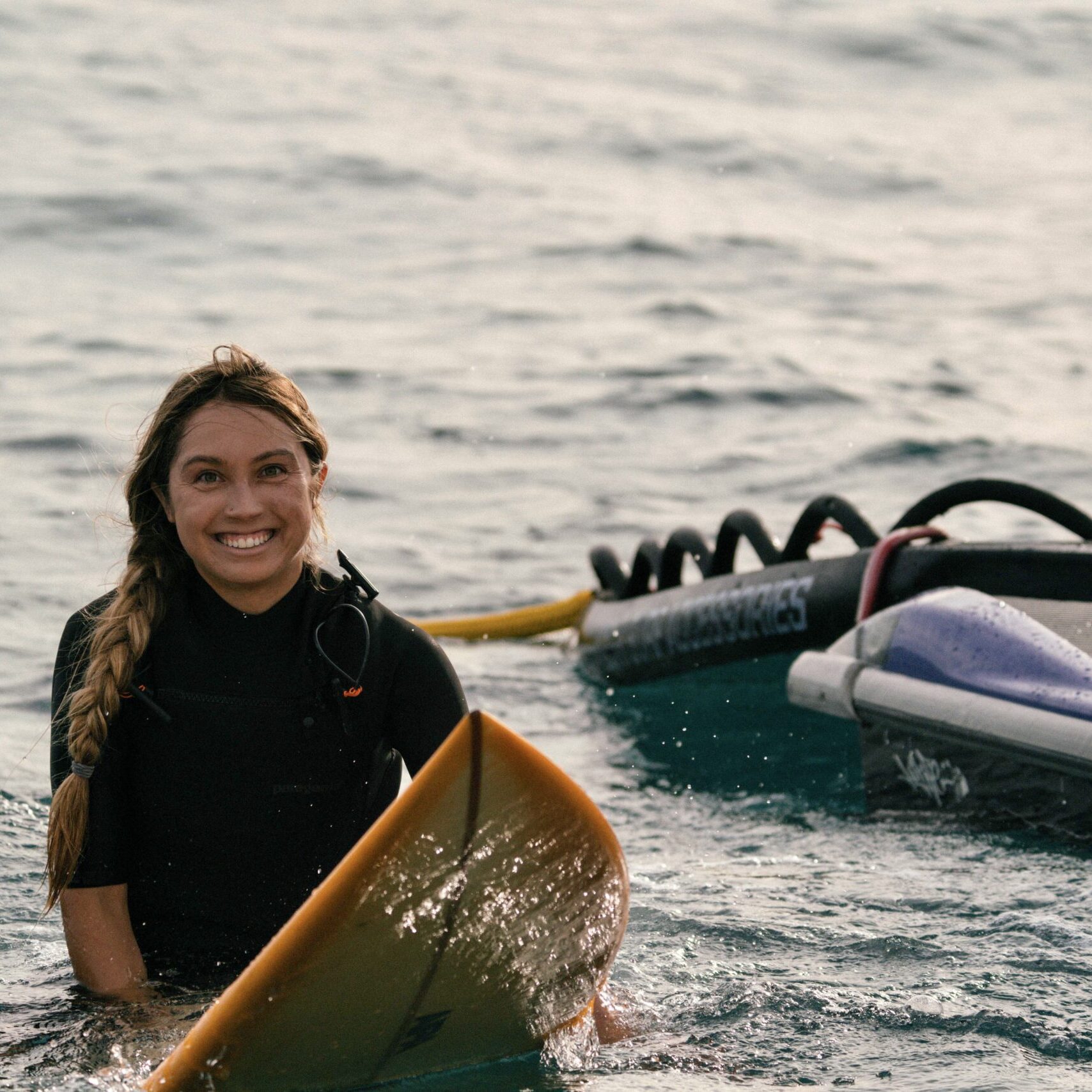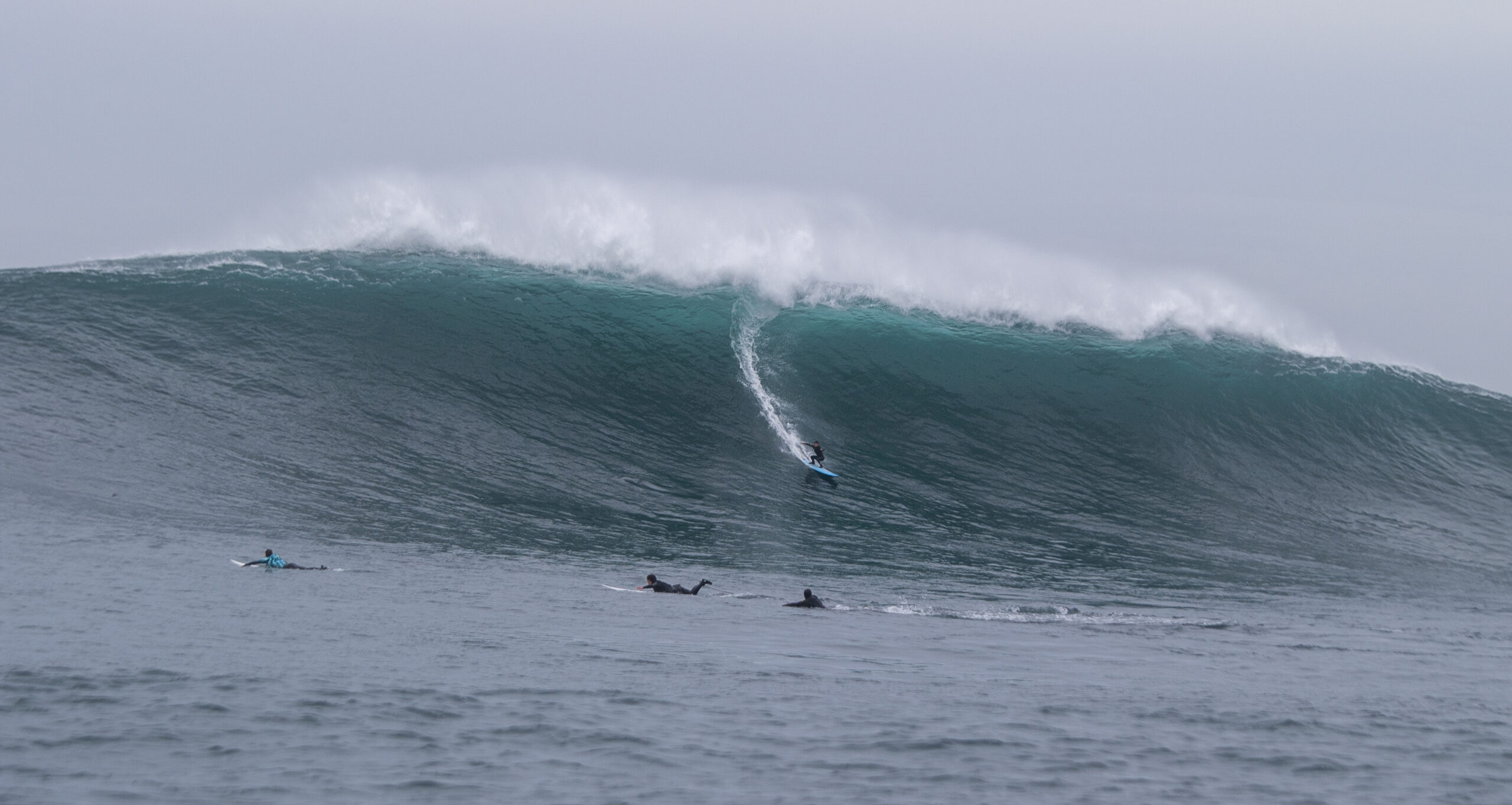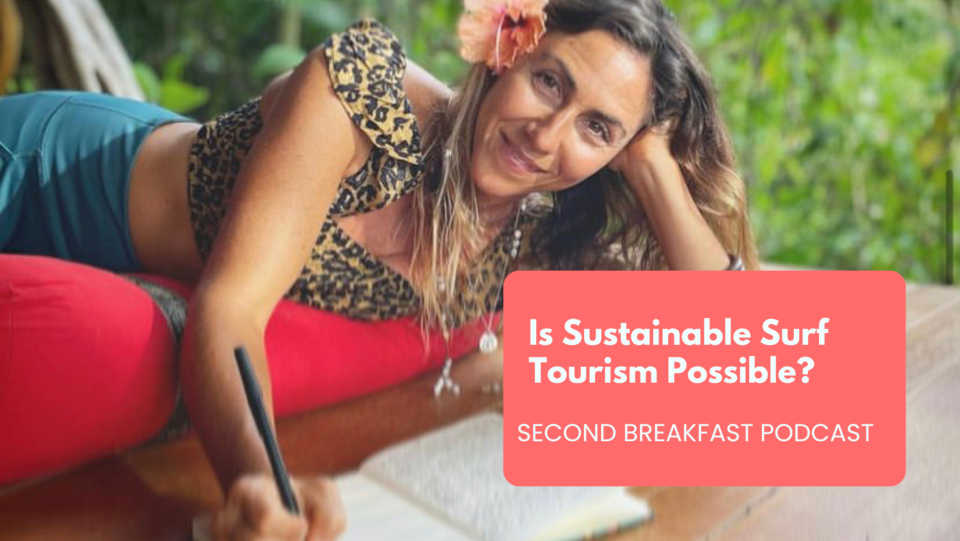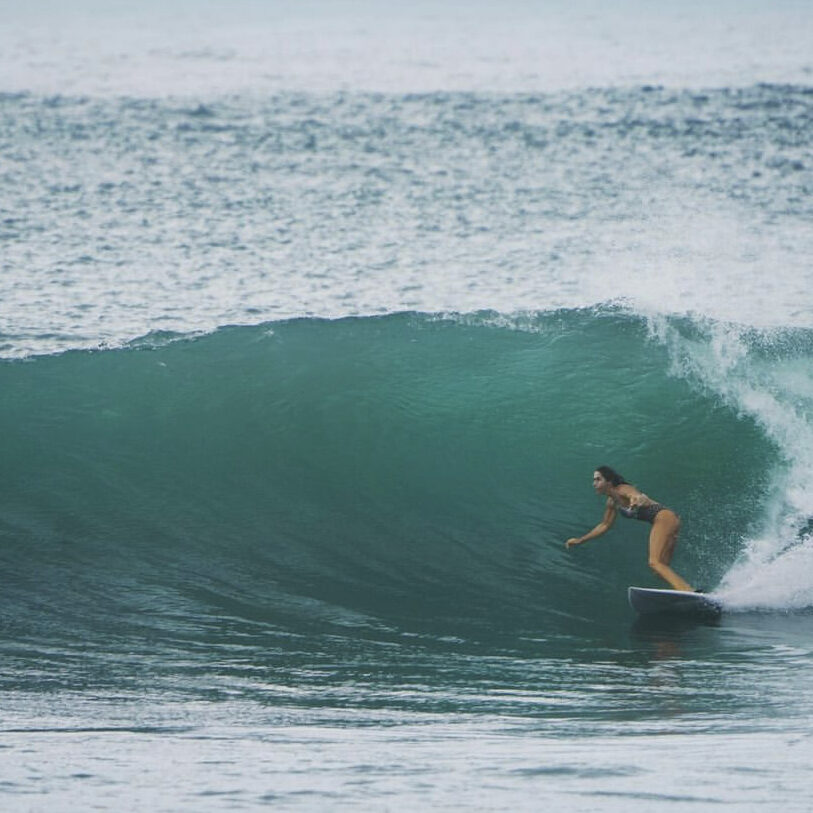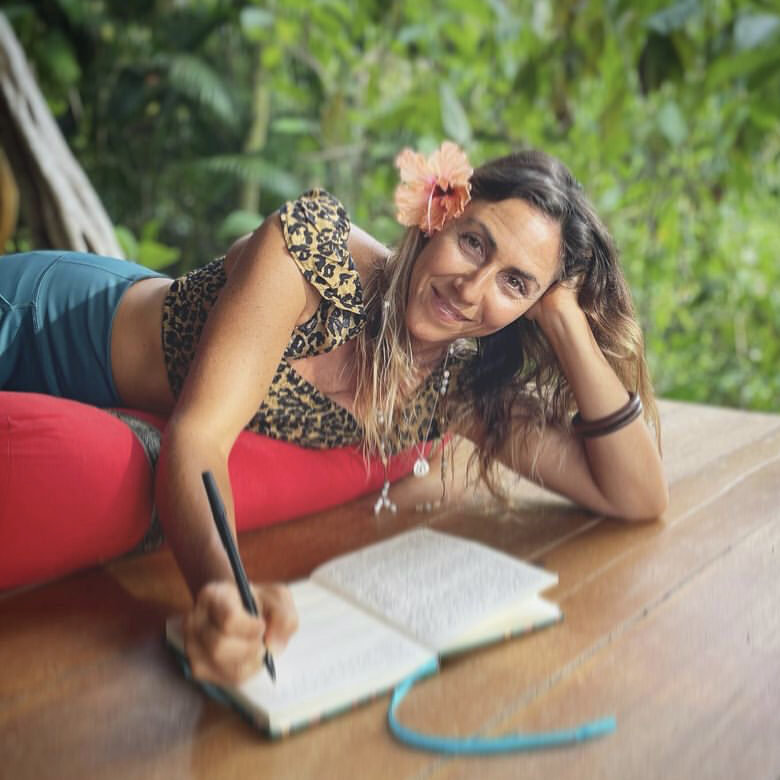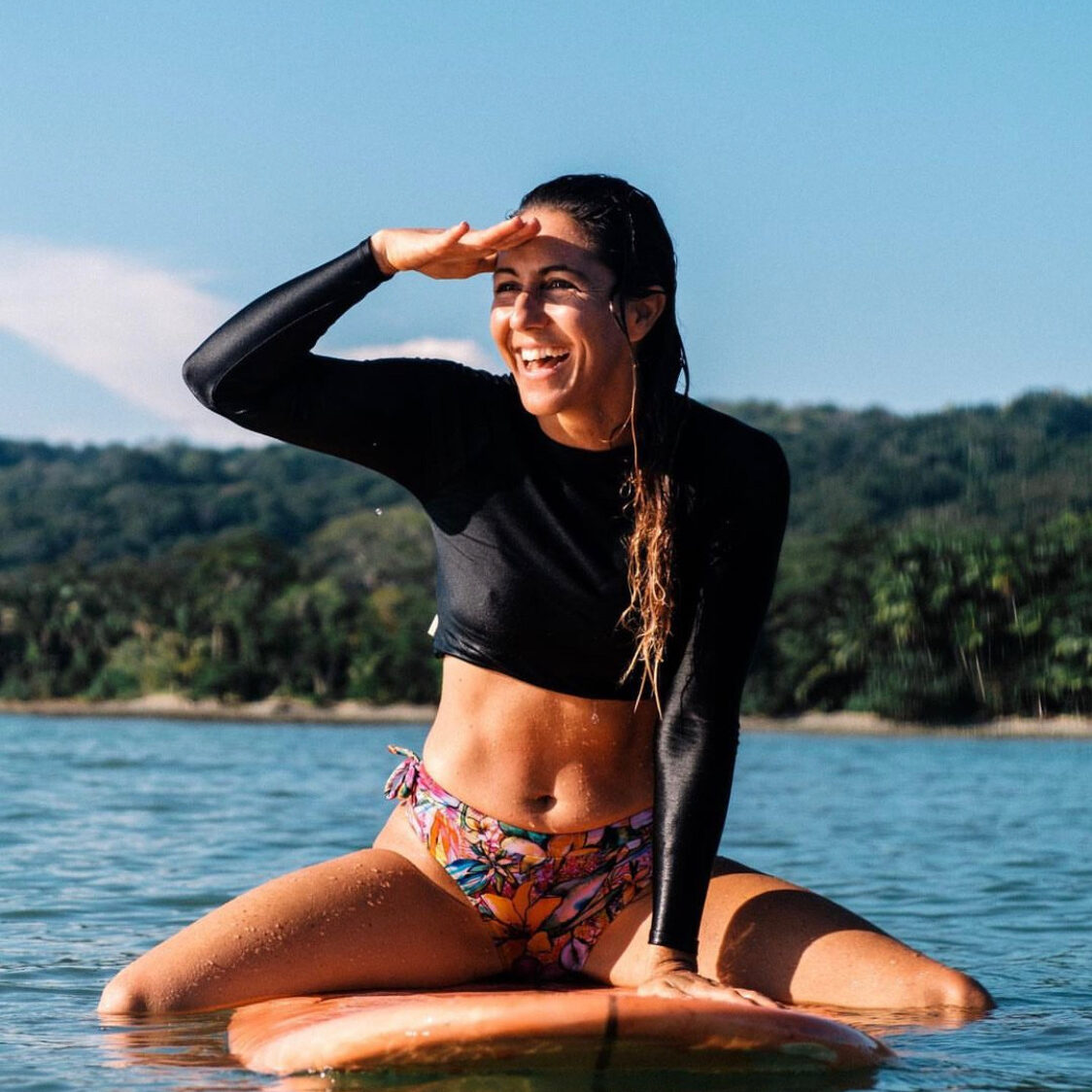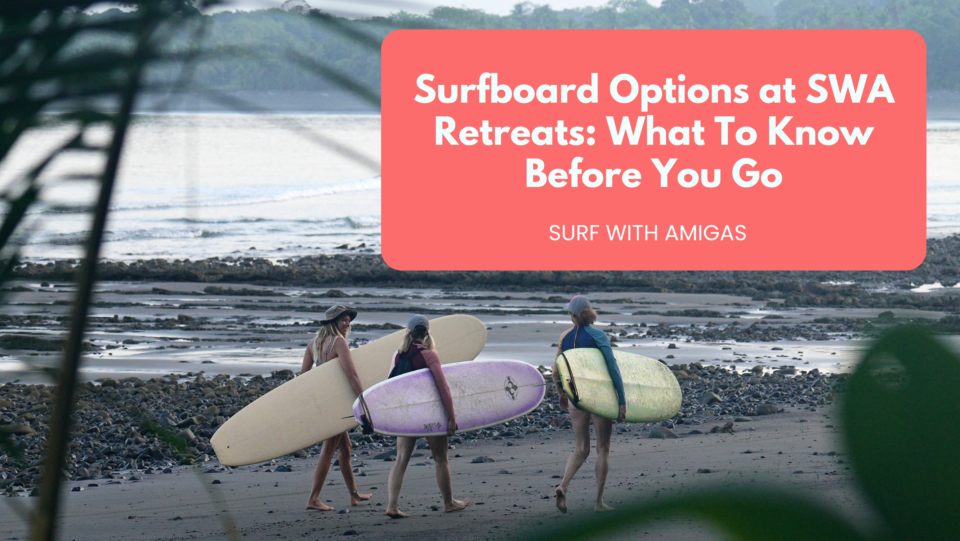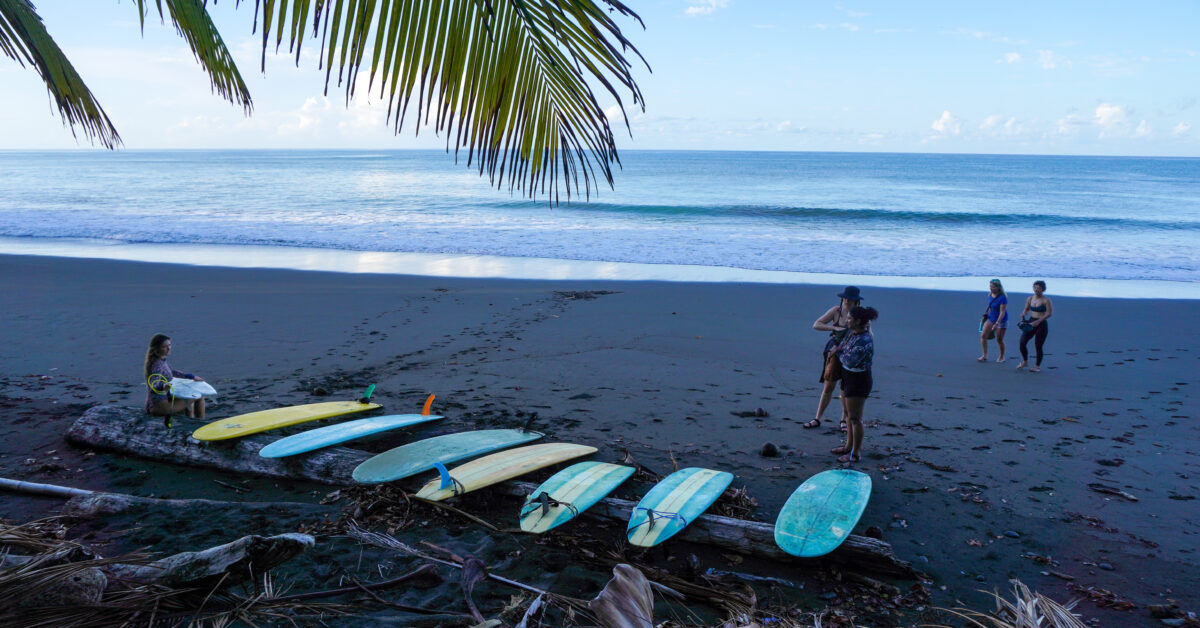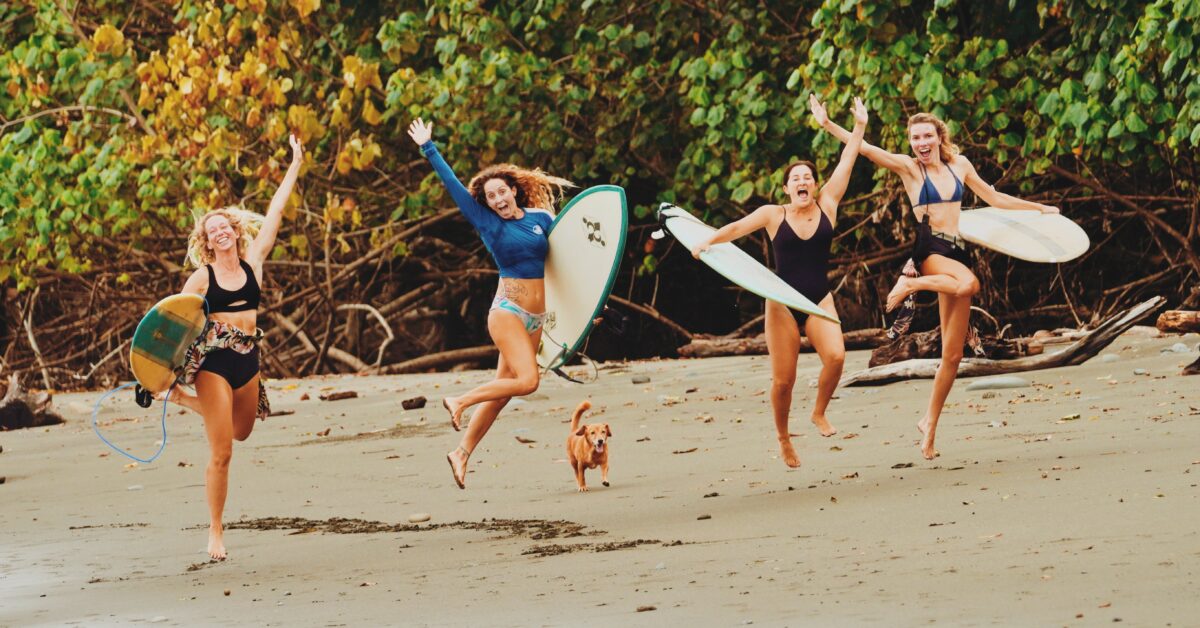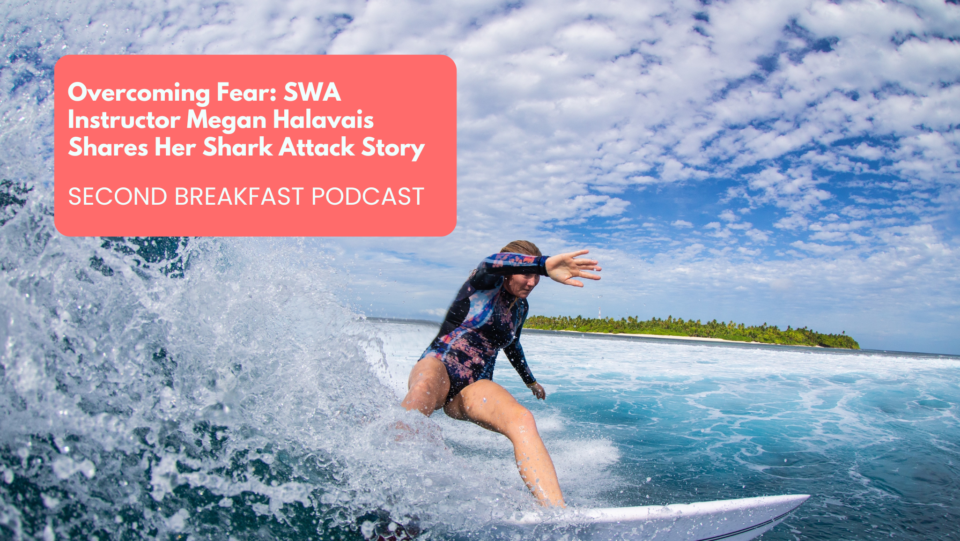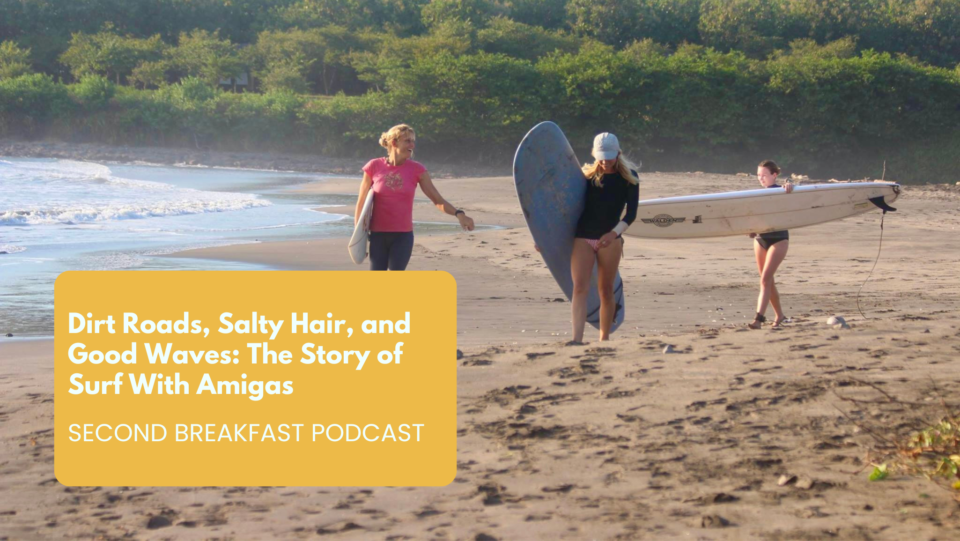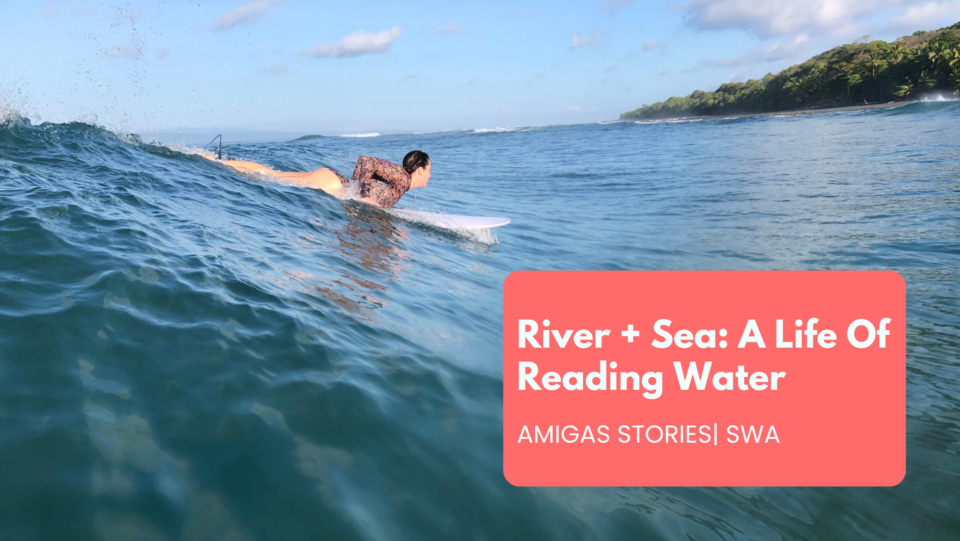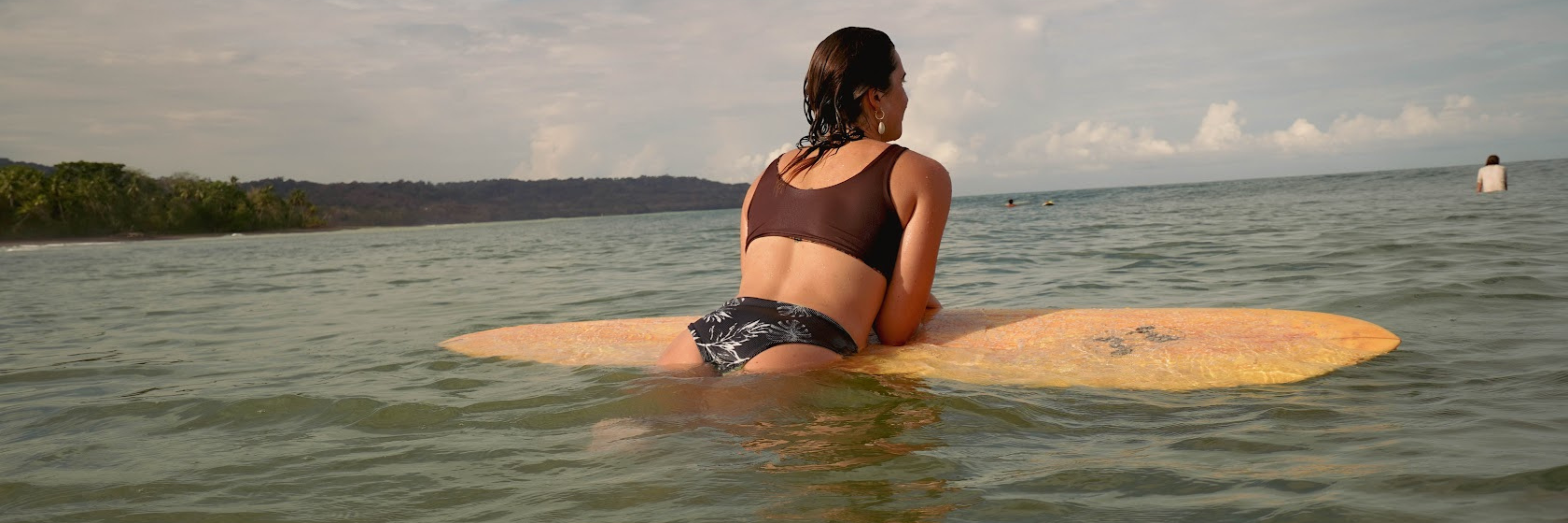“Well, from the beginning, I knew that I was not going to go out without a fight. People walk out of their house every day not knowing that they could get hit by a bus. Do you think that they leave every day worrying that that’s going to happen to them? No, they walk out of their house cocky, taking on the day, like they’re gonna be fine and enjoying their life that way.”
1 in 8 women get breast cancer and younger women are experiencing breast cancer now than ever before. Alida Brandenburg, a former Amiga, shares her own breast cancer story. She begins by sharing her surf story, a journey that picked her up and turned her life in a different direction. But just like how she learned in surfing to let go of control in the water, she found herself completely surrounded by uncertainty when she was diagnosed with breast cancer. During a routine checkup at age 37 (with no symptoms present), she discovered two different types of breast cancer in both breasts.
Alida survived multiple surgeries and 16 rounds of chemotherapy all in just one year. She recalls her story, both mental and physical while also offering advice to other breast cancer patients. She swore to beat her triple negative cancer with a triple positive attitude. Her experience has radically changed her view of her body and what it does for her, most especially in the water.
A PREVIEW OF THIS EPISODE:
I loved surfing enough that the perfectionist in me was willing to be incredibly uncomfortable with my failure because I wanted to keep doing it so much. It became this mindfulness practice in motion.
Last year in January, I went in for one of my routine breast exams and they found that I had breast cancer in not just one type, but two types and in both breasts. So yeah, it was shocking in the sense that I wasn’t expecting it to happen so young. I was 37 at the time I was diagnosed. So I went through 16 rounds of chemo, four of which are the most hellish, terrible type that you can get. There’s actually a lifetime max of four rounds that you can do of that chemo because it is so brutal. It will kill you essentially if you do more than four.
It used to be that over 50 they recommend you start getting mammograms every year. Just this week it was announced that they’ve lowered that to 40 because it is now so common that women get it. And what they’re seeing is that younger and younger women are getting it. So PSA, don’t skip your screenings.
So much in this situation is very destabilizing and challenging. And to harken back to what I was talking about earlier with what surfing has taught me is, you know, it’s like, well, I have to be okay with that. I can’t control all of this. I can’t control the way that the wave moves. I can’t control my strength that day, I might just be having an off day. I can’t control this other surfer that just snaked my wave.

